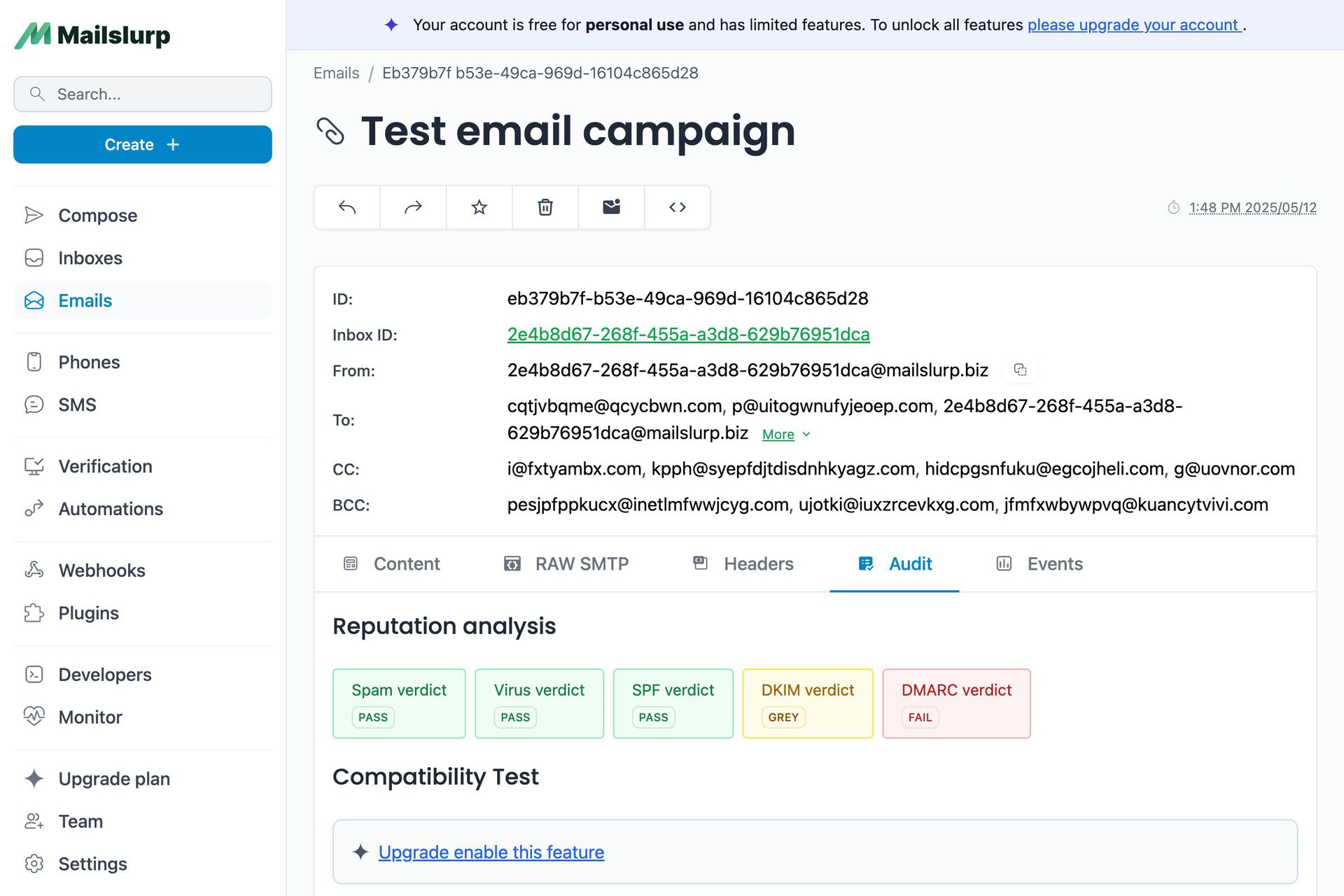Videos
Check out our tutorial video series.
Install and configure MailSlurp using SDK libraries or REST API. Create phone numbers and email accounts and control them in code and tests.
MailSlurp is an Email API built for developers and QA testers. It lets you create real email addresses on demand then send and receive emails from code, tests, or an online dashboard.
MailSlurp uses a custom SMTP MailServer and AWS SES to send and receive emails at scale. You can use CRUD style API methods with MailSlurp libaries or the REST API to send and receive emails and attachments in code and test. You can also use webhooks to receive emails, new contacts and attachments directly to your server. With aliases you can configure auto-forwarding rules and more.
This is a starter guide for developers. It uses Javascript examples to illustrate key features. You can call MailSlurp's API from any programming language. For REST API and SDKs in Ruby, Java, PHP, Python, Go, C#, Swift and more see the developer documentation. You can also explore MailSlurp using the GraphQL email API
To use MailSlurp without code try our interactive dashboard or see the dashboard guide.
MailSlurp is free for personal use but you must have an API Key to use MailSlurp. Get an API Key free by creating an account.

MailSlurp has an official Javascript client on NPM that includes Typescript types. (For REST API and SDKs in other languages see the documentation page.)
In a NodeJS environment import the MailSlurp client library like so:
Or with Javascript ES6 style imports (Typescript also supported):
The MailSlurp package uses fetch for API calls and you can override the implementation for client-side or server-side usage.
To configure MailSlurp you must supply an instance with your API Key. The API key can be found in the MailSlurp dashboard.
You now have a MailSlurp instance ready to use. Let's see how it works.
Keep reading for a guided tour of MailSlurp or see the sections below to get started quickly:
The MailSlurp instance has a number of top level convenience async functions for creating inboxes, sending emails, and receiving emails with methods. (See JS Docs for full method list)
For instance:
Or with promises:
There are many other convenience methods. The full MailSlurp API functionality is also accessible through controller properties. For example:
Early in MailSlurp's lifecycle methods were added directly to the MailSlurp instance. For more recent features use the controllers directly to access the full API methods.
The most common task in MailSlurp is to create a test email account (called an Inbox). Use the inbox controller to do so:
List emails in an inbox:
See the inbox guide more information on inbox creation.
An inbox is a MailSlurp email address that can send and receive emails and attachments. Most methods require an inbox ID. We will cover more inbox creation methods in the next steps.

An inbox can be either an or inboxes. is the default and best for most cases. uses a customer SMTP mailserver targeting legacy clients and is receive-only.
Before we move on to emails sending and receiving its good to know that emails belong to inboxes. You send emails from an inbox ID and the sender address is the inbox email address. When an outside email is sent to one of your inboxes addresses it will be received by MailSlurp parsed and stored.
Emails are when first received and marked as whenever returned by an API call as a full entity or viewed in the dashboard. You can filter returned emails using the flag to ensure you only fetch new emails.
MailSlurp provides many methods for sending and receiving emails. It can be accessed by the email ID or retrieved from an inbox as JSON, HTML, or RAW SMTP request body. A core feature of MailSlurp is waiting for emails. This is built into libraries and API endpoints with the . Because emails are asynchronous and their arrival is unpredictable MailSlurp provides many wait methods that hold an API call open until an expected number of emails matching a query is returned. See the wait for email methods for more information.
Let's explore more ways to create and use inboxes in the next page. To skip to more advanced usage see example projects or reference documentation.
Check out our tutorial video series.
Email and SMS guides for automation and testing.
View github project code for multiple languages.
Latest posts from the MailSlurp team.
Test, build, and automate messaging with a free MailSlurp account.
